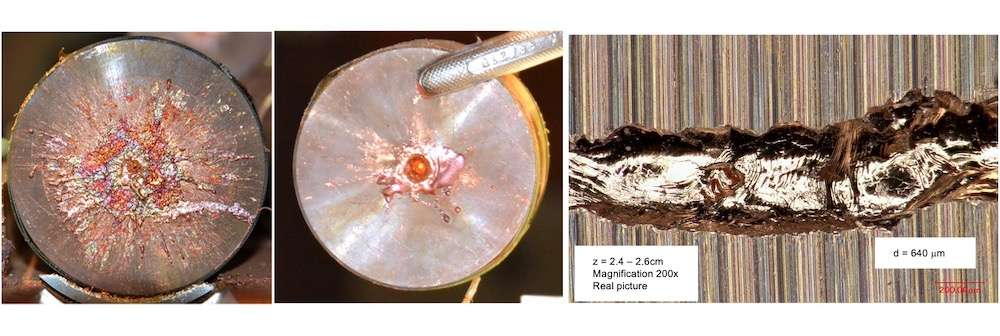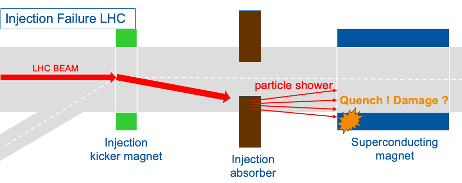Beam-induced damage studies¶
Motivation¶
The TE-MPE group is designing, building and operating magnet protection and machine interlock systems for CERN’s accelerator complex. The group is also regularly asked by different committees and teams at CERN (e.g. the Machine Protection Panel, BE-ABP, SY-ABT, SY-BI, BE-OP, SY-STI, ...) to evaluate the risks posed by special beam tests and machine developments (MDs) in CERN's accelerators for accelerator equipment, including in particular the superconducting magnets in the LHC.
The TE-MPE group is, therefore, performing studies of damage limits and mechanisms of accelerator equipment due to beam impact (simulations and experiments). The upcoming HL-LHC era is increasing the challenges and risks due to a nearly doubling of the bunch intensity and stored beam energy and significantly reduced beam emittances.
Short non exhaustive history of damage experiments¶
In the early 2000s a first damage experiment has been performed in TT40 (CERN-THESIS-2005-047) and its results are still the basis for the setup beam flag in the LHC. This experiment has been a front runner for many tests which followed mainly in CERN’s HiRadMat facility (by SY-STI, EN-MME, TE-MPE and others).
Over the past decade TE-MPE has been focusing on studying special failure cases:
- Expected damage due to the loss of the full LHC beam in the accelerator (failure beyond design), the so-called hydrodynamic tunneling (CERN-THESIS-2016-148)
- Damage mechanisms and limits of superconducting magnet components due to direct beam impact.
 Damaged copper cylinders after the impact of 440 GeV beam in the HRMT12 (LPROT) experiment
Damaged copper cylinders after the impact of 440 GeV beam in the HRMT12 (LPROT) experiment
Motivation of the studies on sc. magnet components¶
Failures during the injection or extraction of the LHC beams can lead to a miss-steering of the beam into protective absorbers. This impact creates particle showers causing energy deposition (heating) in the downstream magnets in the order of 100 J/cm3 (see picture below). At the beginning of the studies it was not clear if this level of energy deposition was critical or not. Leading to a new question: What are the damage mechanisms and limits of superconducting magnets due to the impact of high intensity particle beams.

Critical components of superconducting magnets¶
- Polyimide insulation (Nb-Ti magnets only)
- Strands and cables of Nb-Ti and Nb3Sn superconductors
Timeline of the experimental program¶
